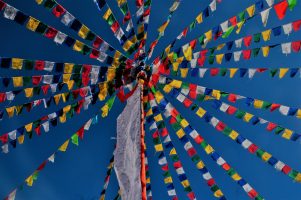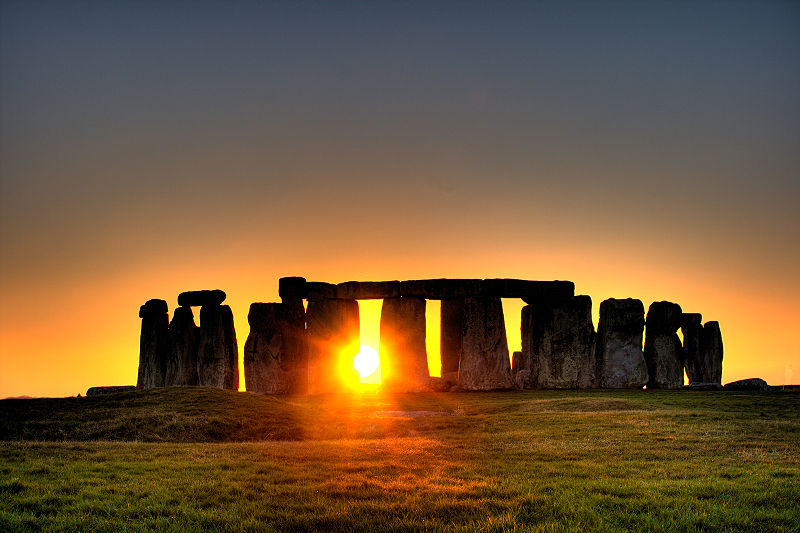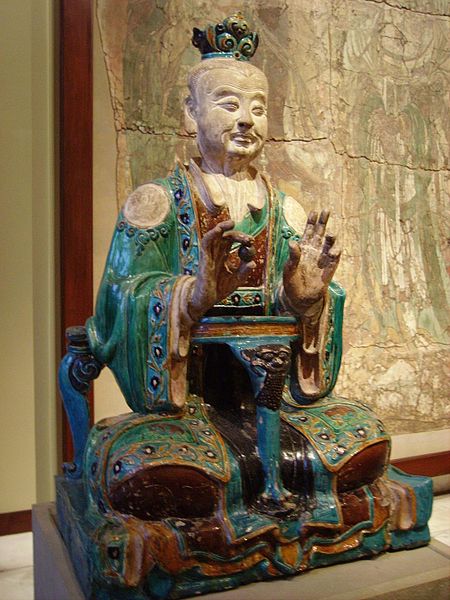Solar Festivals in Tibetan Buddhism
Article By Giulia Giacco

The qualities of the summer solstice: stillness, light, clarity, openness, warmth and abundance, parallel in many ways the factors of enlightenment in the teachings of the Buddha. However, Buddhism has no celebration around the summer solstice. Summer solstice celebrations don’t seem to synchronise well with the concept of the “middle way”. One of the reasons summer solstice has historically been a time of celebration and joy is no doubt linked to the amount of sunlight received. The solstice marks the longest day of the year and summer is a time of increased ease and excesses, exemplified by the bursting of light and the desire to move and be outside to make up for time “lost” during the dark, cold and long winter.
However, summer may also be a time of apathy, inertia, of veiled but growing anxiety as the summit of sunlight is reached and the sun has by now reversed its trajectory. The apparent association of the summer solstice and summer season with the “body’s reactions” to the natural circumstances of the “weather”, may look indeed, from a Buddhist point of view, very much pertaining to the embodied rather than the inner life. It is quite a “relative” form of enlightenment, if we may say so.
Not all cultures use a solar-based calendar. In the Mahayana Buddhist traditions, based in the lunar month, it is the relationship between the sun and the moon which is of importance in determining and celebrating the solar festivals. The Buddhist tradition invites to recognise the transience of everything that is manifested, which is a reflection of the law of cyclicity: each and every sacred festivity in the month, following the beat of the moon’s phases, acknowledges this cyclicity while also celebrating physical and metaphysical enlightenment. At the full moon the sun and moon are in exact opposition and so the moon is fully illuminated by the light of the sun. Therefore the full moon periods have been referred to as the “solar festivals” or the “solar fire festivals”, spanning five days—two days preceding, the day of the lunation itself, and the two days following.
The most sacred among the monthly solar festivals falls on the fourth month of the Tibetan Calendar, and is called Saka Dawa. Festivities peak on the 15th lunar day (full moon), which is associated with three major events in Buddha’s life – his birth, his enlightenment on a full moon night, and his Parinirvana (death). Saka Dawa is usually celebrated between April and May, but in leap years, it falls between May and June. Tibetan Buddhists believe that immense amounts of merits and purification can be accumulated through practice in this period. These meritorious acts revolve around early teachings of Sila (morality), Dana (generosity) and Bhavana (meditation). Since the full moon day is the most sacred, these acts are practiced with more attention and enthusiasm.
The practices performed during the Saka Dawa and the solar festivals can be seen as re-centering experiences in times of devotion and connection with the sacred, reflecting in the way action is expressed in the world. The time following the summit of light (“summer” in our solar calendars), is a time for consolidation of what was gained in terms of insights during these practices, a time of reaping of the fruits of the inner work with the presence and openness characteristic of this time of apparent “stillness”.
As we noticed above, summer’s external factors are many and may represent a moment of dispersion. As the outer and inner space that we inhabit “expands”, demanding from us more attention and compassion, our inner light can help us navigate with dignity and acceptance, knowing at the same time that warm days and sunlight come and go. It is a time of integration and application of what we have learnt, in all activities, while also looking outside, stepping out of our preoccupations while being together, experiencing something bigger than ourselves. Times of light help us to refocus, reflect, see clearly, directly, without judgments, into our shadows. Like farmers store crops during summer for the rest of the year; we can “store” what we have acquired through our personal efforts and merit and access them when we need to gain perspective and connect to the essence of things during the darker seasons of our soul.
We can call upon our inner “crop supplies” to gain in confidence and know that the ability of enlightenment, of becoming a Buddha, exists in every individual, regardless of the time of the month or the year, the amount of sunlight or the temperature. Light is always there, be it day or night, winter or summer: it never goes. We need to connect to it consciously and be able to express it. The source, the factor of light, our sun, our full moon, is within. Summer solstice and solar festivals are just cyclical reminders set by nature on our personal and collective calendars
Image Credits: By Nomad Bikers | Unsplash | CC BY PD
The entity posting this article assumes the responsibility that images used in this article have the requisite permissionsImage References
By Nomad Bikers | Unsplash | CC BY PD




What do you think?